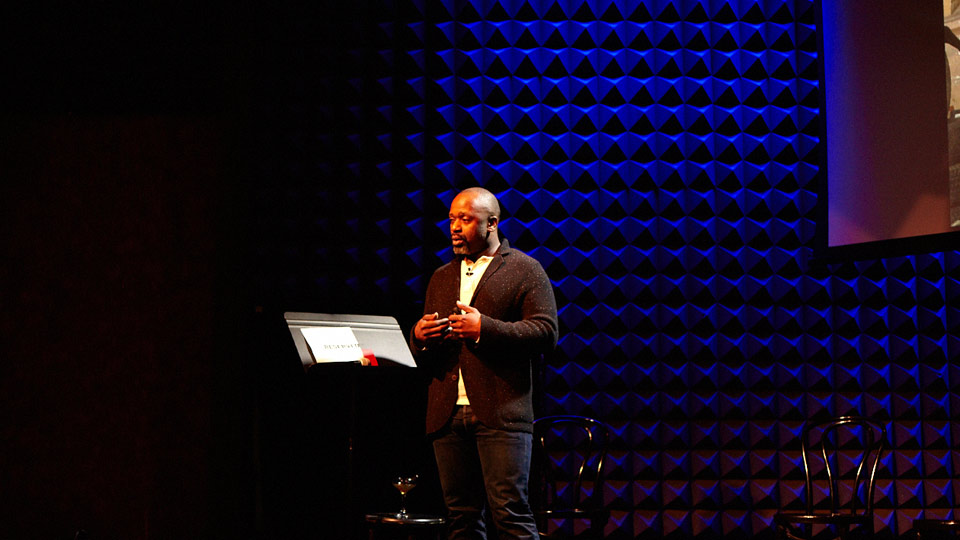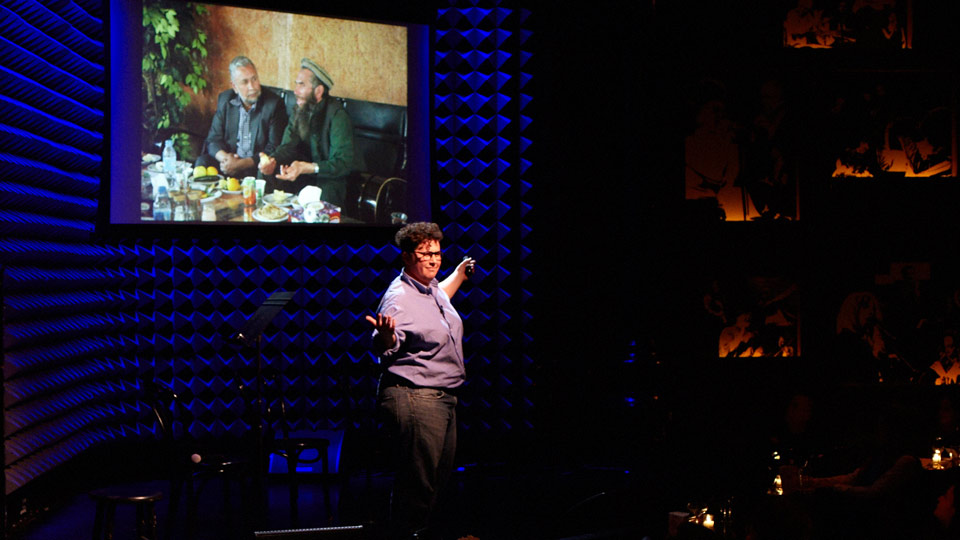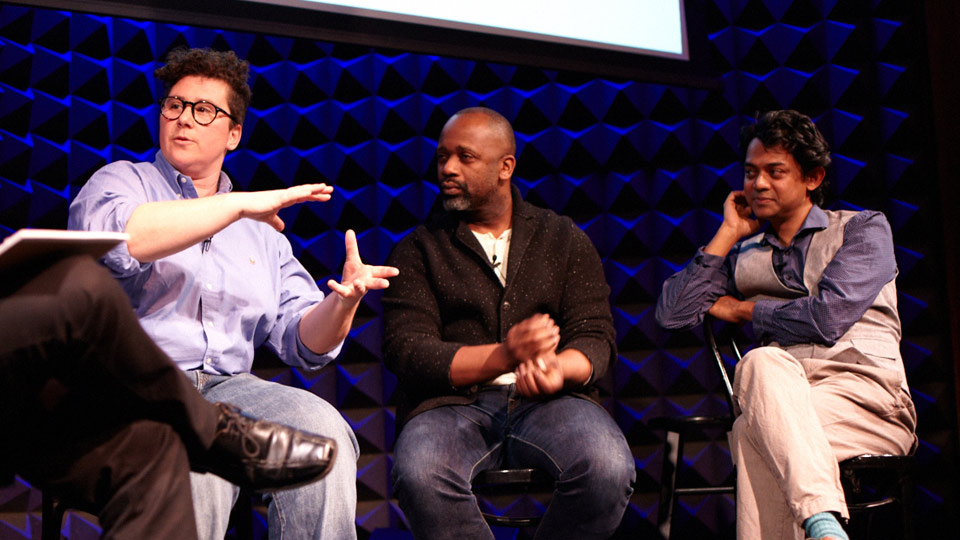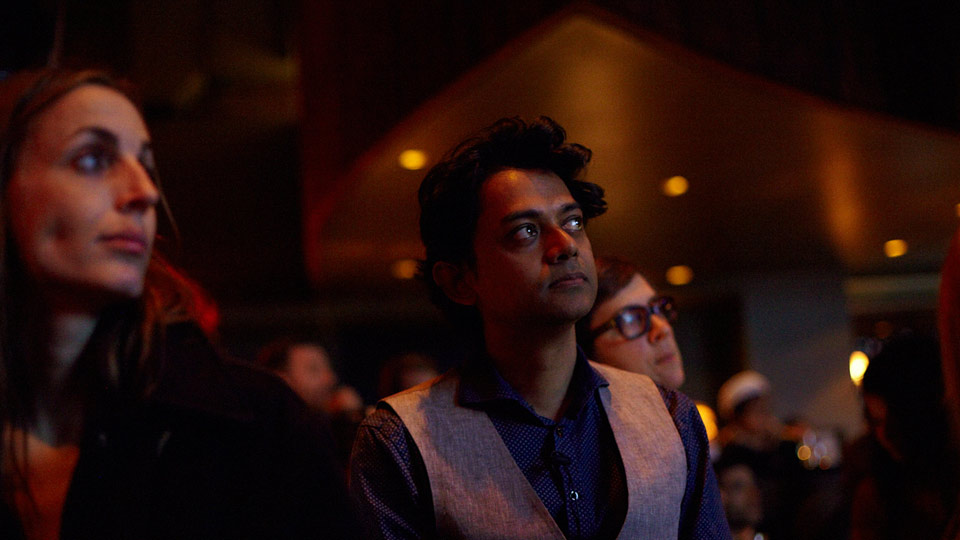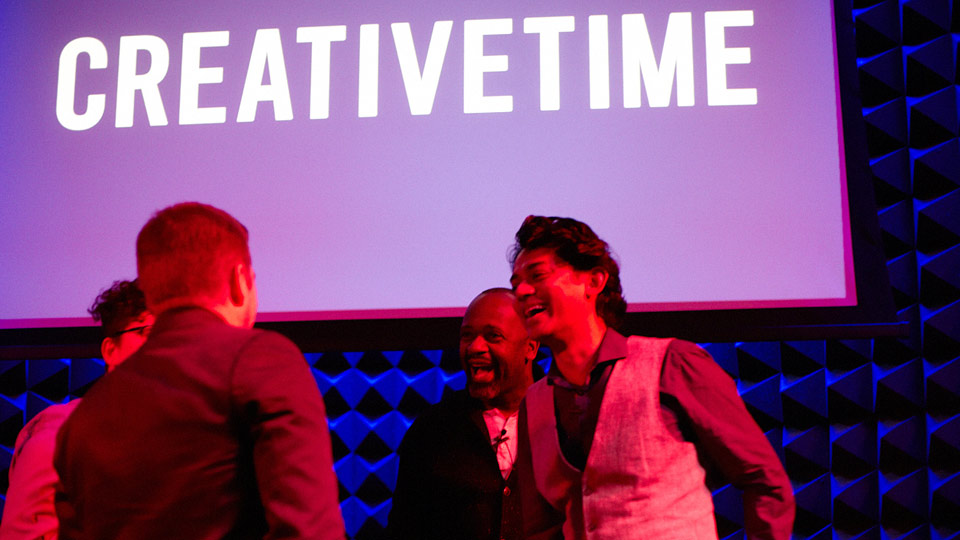Reports from the Field
Naeem Mohaimen met with radical leftists in Bangladesh. Duke Riley made an action movie with Somali pirates in prison. In the far reaches of the world, our seven 2012-13 Global Residents sought answers to burning questions that would help them expand or redefine their practices. At Joe’s Pub, they shared these experiences with the New York community, in a series of frank conversations and colorful presentations. Read more about their projects at right.
About the Global Residency
Opportunities for artists to travel are more abundant than ever—an international art fair or biennial seems to be under way at any given moment. Yet while these global meeting grounds provide valuable opportunities for the international art community, artists rarely find the time to connect their travel to their own practice in a meaningful way. Creative Time’s Global Residency Program, initiated in 2010, was designed to enable artists to step off the treadmill of exhibition making and into the world to explore a burning question that cannot be fully pursued in the studio. Unlike traditional residencies, which provide a place for artists to retreat from the world, Creative Time’s Global Residency sends artists out into the world, enabling them to immerse themselves in places where they can seek answers to the
burning questions that will help them develop their practice.
In its pilot season, Creative Time Global Residencies were awarded to six artists: Sanford Biggers, K8 Hardy, Emily Jacir, Maya Lin, Walid Raad, and Swoon. This season, seven artists have been selected for Residencies. Theaster Gates will travel to Haiti; Andrea Geyer to Australia; Suzanne Lacy to Colombia and Ecuador; Lisi Raskin to Vietnam and Afghanistan; Duke Riley to various sites in Africa; and Mika Tajima to Ahmedabad and Bangalore, India. Naeem Mohaiemen began his travels with a trip to Bangladesh in 2012 and hopes to continue his work in the Netherlands in 2013.
Supporters
Generous support for the 2012–13 Creative Time Global Residencies has been provided by the Robert Sterling Clark Foundation and individual donors.




